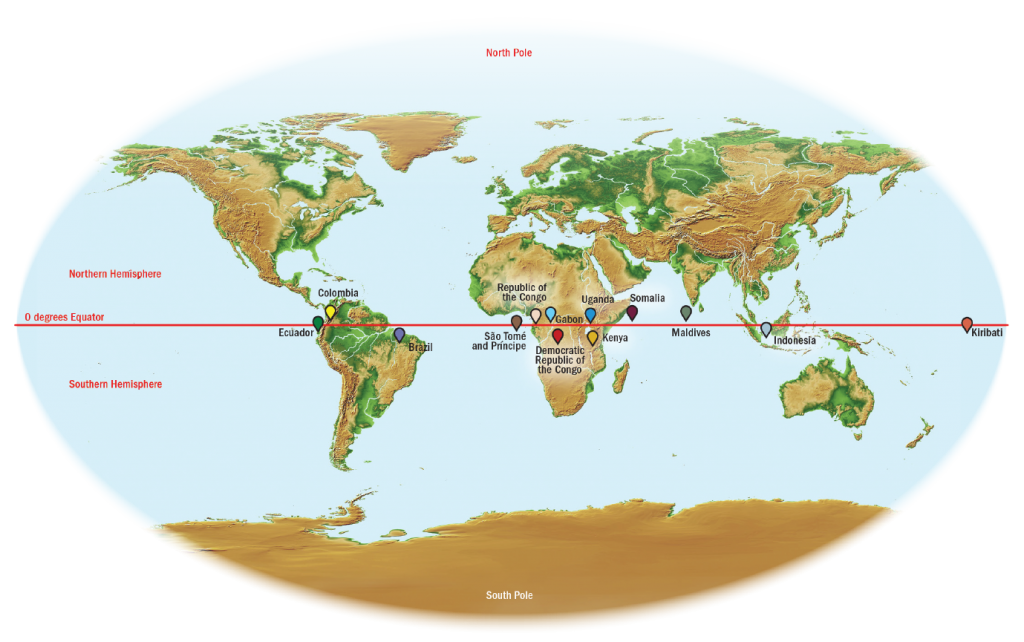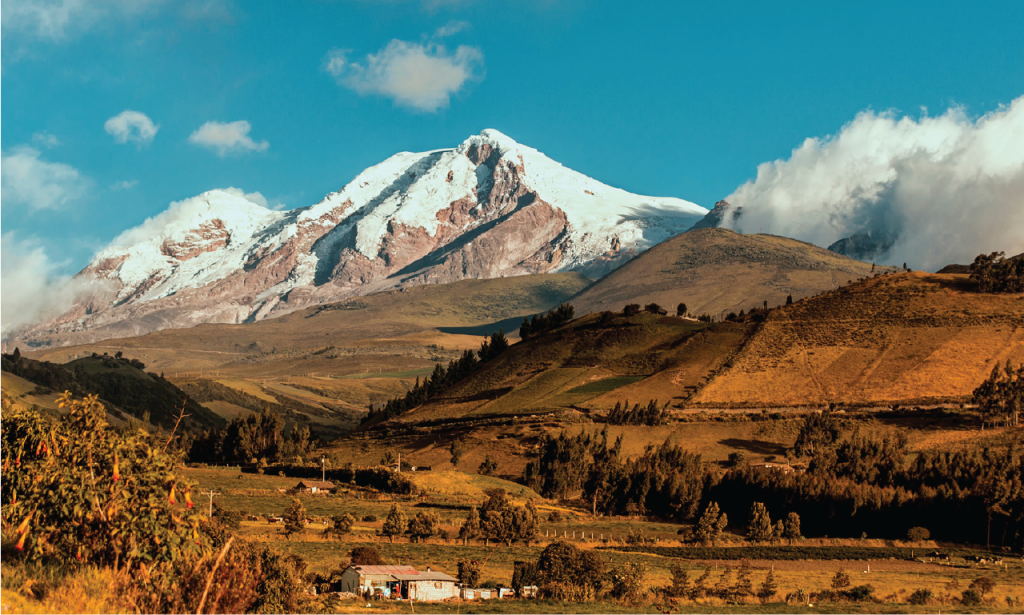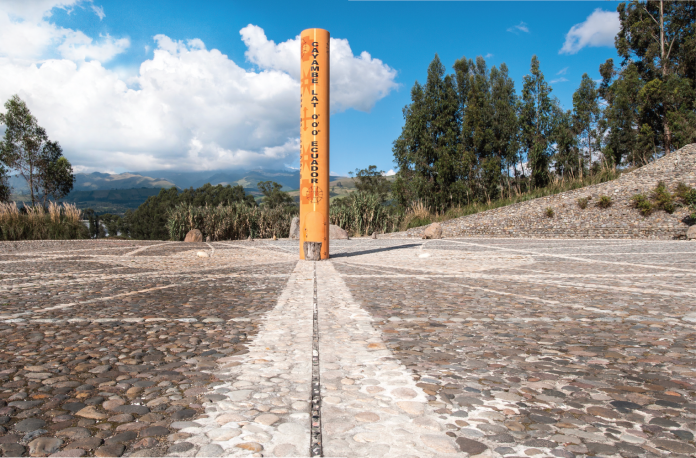Everybody knows about this imaginary line on the Earth’s surface that lies equidistant from the North Pole and the South Pole. Almost half the world’s rainforests are concentrated on the equator, and, naturally, it serves as the world’s greatest concentration of natural biodiversity. From its seasons to its people, the equatorial region is a unique and fascinating place.
What Is the Equator?
 An invisible line that runs around the centre of the Earth at zero degrees latitude, the Equator may not seem like the most exciting line of topic. Halfway between the North Pole and the South Pole, the equator divides the planet into the Northern Hemisphere and the Southern Hemisphere. This roughly 40,075-kilometre line is where the Earth is at its widest. Some 78.8 percent of the equator lies across water, with the remaining 21.3 percent over land, and it crosses 13 countries over three continents – Ecuador, Colombia, Brazil, São Tomé and Príncipe, Gabon, Republic of the Congo, Democratic Republic of the Congo, Uganda, Kenya, Somalia, Maldives, Indonesia, and Kiribati. Indonesia sits on the greatest length of the equatorial line across both land and sea. It seems like things are starting to get a little interesting now.
An invisible line that runs around the centre of the Earth at zero degrees latitude, the Equator may not seem like the most exciting line of topic. Halfway between the North Pole and the South Pole, the equator divides the planet into the Northern Hemisphere and the Southern Hemisphere. This roughly 40,075-kilometre line is where the Earth is at its widest. Some 78.8 percent of the equator lies across water, with the remaining 21.3 percent over land, and it crosses 13 countries over three continents – Ecuador, Colombia, Brazil, São Tomé and Príncipe, Gabon, Republic of the Congo, Democratic Republic of the Congo, Uganda, Kenya, Somalia, Maldives, Indonesia, and Kiribati. Indonesia sits on the greatest length of the equatorial line across both land and sea. It seems like things are starting to get a little interesting now.
The Earth bulges slightly at the equator, which means that sea levels are slightly higher in equatorial regions than near the poles, and the Earth’s gravitational pull is slightly weaker at the equator. Fascinatingly, the slightly weaker gravitational pull and momentum of the spinning Earth makes equatorial regions ideal for space launches. It takes an enormous amount of energy to launch a satellite or other spacecraft out of the Earth’s atmosphere. It takes less energy – or rocket fuel – to launch in lower gravity.

This is why the USA launches most spacecraft from the Kennedy Space Center in southern Florida, which is the closest location to the equator in the country. There are other rocket-launching facilities in the Democratic Republic of Congo and the Maldives.
While temperatures at the equator are generally high, there is one point on the equator where you’ll find snow! The highest point on the equator is 4,690 metres, on the south slopes of Volcán Cayambe in Ecuador, where temperatures can go below freezing.

It is mistakenly believed that the weather on the equator stays the same. While tropical areas along the equator can experience wet and dry seasons, other regions may well be wet for much of the year In its seasonal movement through the sky, the Sun passes directly over the equator only twice each year, on the March and September equinoxes.
A seafaring tradition existed, performed mostly by the US Navy, where sailors who crossed the equator during a sea voyage had to join rituals initiating them into what is known as “The Solemn Mysteries of the Ancient Order of the Deep”. If they succeeded, it was believed that King Neptune had accepted them as one of his trusty “shellbacks”.
Interested to know more about the equator? Check out the rest of the article in Asian Geographic’s “The Earth Edition” issue here or download a digital copy here!











